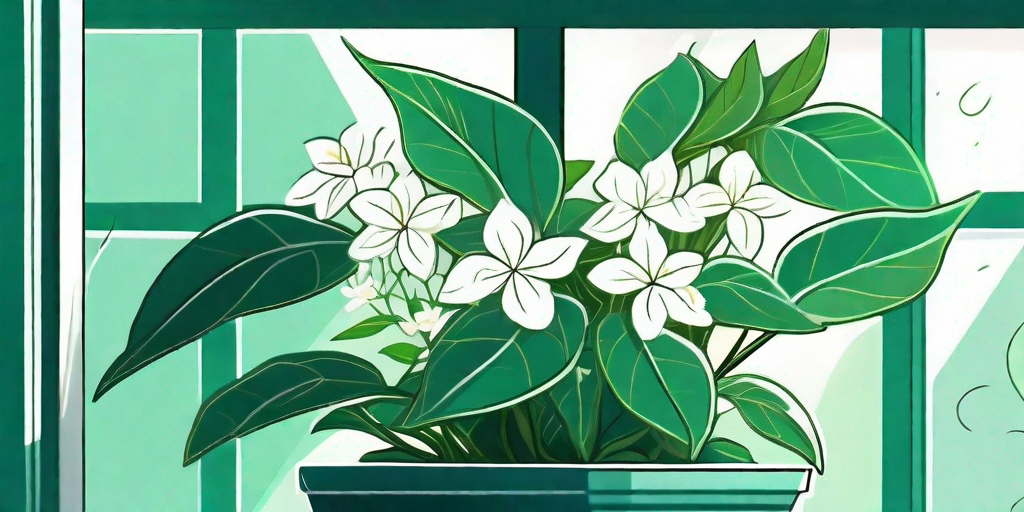
Ah, the sweet, intoxicating scent of jasmine. It's a fragrance that can transport you to a lush, tropical paradise, even if you're stuck in a cramped city apartment. But how do you keep this exotic beauty thriving indoors? Well, dear reader, you're about to embark on a horticultural journey that will turn your living room into a veritable Eden. So, grab your gardening gloves, and let's get started!
Understanding Your Jasmine Plant
Before we dive into the nitty-gritty of jasmine plant care, it's important to understand a bit about this botanical beauty. Jasmine belongs to the Oleaceae family, which includes around 200 species. But don't worry, we're not going to bore you with a botany lecture. We're here to help you keep your jasmine plant happy and healthy indoors.
Most jasmine species are tropical or subtropical, which means they love warm, humid conditions. However, they can adapt to indoor environments if given the right care. So, even if your home is more Arctic tundra than Amazon rainforest, don't despair. With a bit of TLC, your jasmine plant can thrive.
The Importance of Light
Like most plants, jasmine needs plenty of light to grow. But this doesn't mean you should stick it in a sun-drenched window and hope for the best. Jasmine prefers bright, indirect light. Too much direct sunlight can scorch the leaves, leaving your plant looking more fried than flourishing.
So, where should you place your jasmine plant? A north or east-facing window is ideal. If you don't have one of these, don't worry. Just make sure your plant isn't exposed to harsh, direct sunlight for long periods. Remember, your jasmine plant is a delicate flower (literally), so treat it with care.
Watering Wisely
When it comes to watering your jasmine plant, it's all about balance. Too much water can lead to root rot, while too little can cause the leaves to wilt. The key is to keep the soil consistently moist, but not waterlogged.
A good rule of thumb is to water your plant when the top inch of soil feels dry to the touch. But remember, every plant is unique, so you'll need to adjust your watering schedule based on your plant's needs. If your jasmine plant starts looking a bit peaky, it might be trying to tell you something. Listen to your plant, and adjust your care routine accordingly.
Creating the Perfect Environment
Now that we've covered the basics of light and water, let's talk about creating the perfect environment for your jasmine plant. Remember, jasmine is a tropical plant, so it loves warm, humid conditions. But how do you recreate a tropical rainforest in your living room? Read on to find out.
Firstly, let's talk temperature. Jasmine plants prefer a temperature range of 60-75 degrees Fahrenheit. So, unless you live in a freezer or a furnace, your home should be suitable. Just avoid placing your plant near drafts or heat sources, as sudden temperature changes can stress your plant.
Humidity is Key
Humidity is another crucial factor for jasmine plants. They love moist air, but most homes are drier than a desert. So, how do you increase humidity levels? One option is to place your plant on a tray filled with pebbles and water. The water will evaporate, creating a humid microclimate around your plant.
Another option is to mist your plant regularly with water. Just make sure you use a fine mist, as large droplets can lead to water spots on the leaves. And remember, it's not just about quantity, but also consistency. Try to maintain a consistent level of humidity to keep your plant happy.
Fertilizing for Growth
Like all living things, jasmine plants need food to grow. But don't reach for your leftovers just yet. Jasmine plants prefer a balanced, water-soluble fertilizer, applied every two to four weeks during the growing season.
But remember, more isn't always better. Over-fertilizing can lead to salt buildup in the soil, which can damage your plant. So, follow the instructions on the fertilizer package, and remember the old adage: less is more.
Frequently Asked Questions
Why are the leaves on my jasmine plant turning yellow?
Yellow leaves can be a sign of several issues, including over-watering, under-watering, or a lack of nutrients. Check the soil moisture and adjust your watering schedule if necessary. If the problem persists, try feeding your plant with a balanced fertilizer.
Why isn't my jasmine plant flowering?
Jasmine plants need plenty of light to flower. If your plant isn't blooming, it might not be getting enough light. Try moving it to a brighter location, but avoid direct sunlight, which can scorch the leaves.
Conclusion
So there you have it, folks. With a bit of care and attention, you can keep your jasmine plant thriving indoors. Just remember to provide plenty of light, keep the soil consistently moist, and create a warm, humid environment. And most importantly, listen to your plant. It will tell you what it needs.
Now, go forth and turn your home into a tropical paradise. Your jasmine plant is counting on you!















